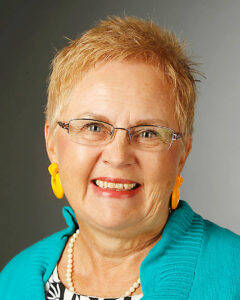Have you ever had to untangle a skein of yarn after the cat, the toddler or something else has made a mess of it? It is hours of mess that must be meticulously sorted one small knot at a time. The task is frustratingly slow. You tug on one string, only to see a mass of yarn move, tighten and bunch on the other side of the pile. Where was the connection? Points “X” and “Z” seem to be on opposite sides of the ball of yarn. Yet they are reacting.
But we can make this concept even more perplexing. What if, instead of two opposite ends of the yarn reacting, they act in concert? What if pushing a free end through a loop also pushes another end through a loop? What if you watch this happen and then find out that the two strands of yarn aren’t even connected?
Well, now we have three knew Nobel laureates in physics because they wanted to find out what was going on with a subatomic ball of yarn. Alain Aspect, John Clauser and Anton Zeilinger each have conducted groundbreaking experiments using entangled quantum states, where two particles behave like a single unit even when they are separated.
Quantum physics is the study of matter and energy at a subatomic level involving the smallest building blocks of nature. Because the size and distances involved are so infinitesimally small, the laws that govern these quanta do not obey the rules of classical Newtonian physics. The behavior of quanta are hard to imagine because their actions cannot be observed or conceptualized in the world of our senses. Aspect, Clauser and Zeilinger’s work involved “the mind-boggling insight that quantum mechanics allows a single quantum system to be divided up into parts that are separated from each other, but which still act as a single unit. This goes against all the usual ideas about cause and effect and the nature of reality,” stated the Royal Swedish Academy of Sciences, which awarded the prize.
Who are these scientists who work in languages that contain more numbers than words and use mathematics that contains more letters that numbers? First, they are of an age. Alain Aspect is French, born in 1947. John F. Clauser was born in 1942, a born and bred Californian. Anton Zeilinger was born in 1945 in Austria. They are not colleagues but will now share the Nobel Prize money of 10 million Swedish kronor. That means each man will get about $300,000 U.S. dollars. Second, they are all alive. The Nobel Prize is only given to the living, never posthumously, despite the importance of the contribution.
This year’s laureates’ development of experimental tools apropos of entangled quanta laid the foundation for a new era of quantum technology. Is this useful? By definition it must be. The Nobel Prizes are never given for knowledge that does not have a demonstrably practical application. The Nobel Prize does not honor “knowledge for the sake of knowledge,” but knowledge for the sake of progress.
How does knowing that quanta are “entangled” (i.e., instantly knowledgeable of changes in one as demonstrated in changes in another), even when they have no communication or contact with each other, do something useful? Zeilinger’s work shows that it is possible to exchange the position of one entangled particle with its paired photon so that information can be sent instantly from one point to another in a way that is unhackable, complete and accurate. Useful.
Personally, I have always been a sapiosexual. Smart is the new sexy and these men fit the bill. Follow the Nobel Prizes this week. It will help you keep the faith.
Louise Butler is a retired educator and published author who lives in Edinburg. She writes for The Monitor’s Board of Contributors.





